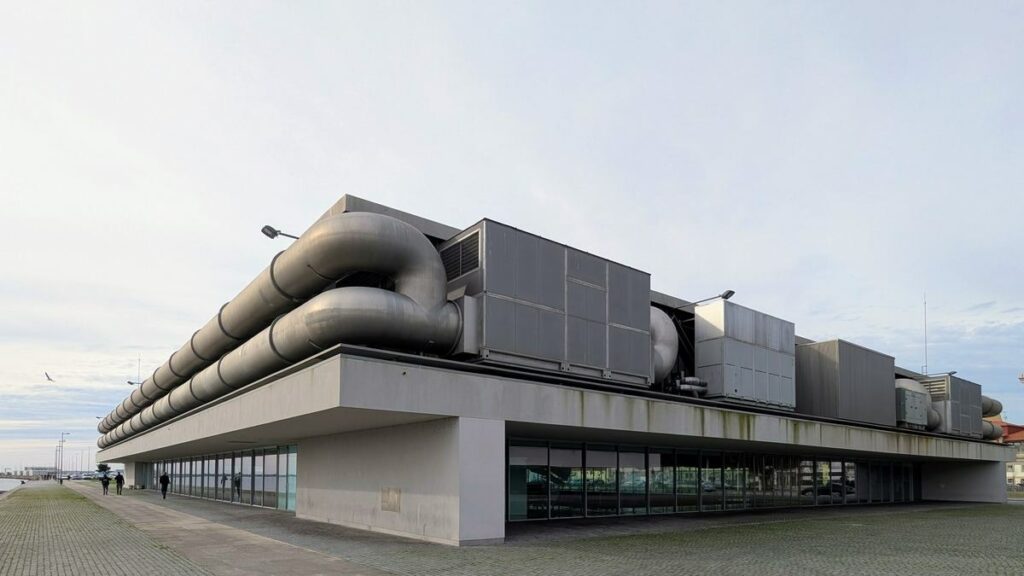2000 - 2004
The Multipurpose Pavilion of Viana do Castelo, designed by Eduardo Souto de Moura, is a striking example of modern architectural ingenuity, seamlessly integrating with its urban and natural surroundings. Conceived as part of the requalification of the urban space on the right bank of the river Lima, the pavilion serves as a versatile venue for cultural, musical, sporting, and leisure events. Its design reflects a deep understanding of the site’s context and the architect’s commitment to creating a harmonious dialogue between the built environment and nature.
Souto de Moura’s vision for the pavilion was to create a space that not only fulfilled its functional requirements but also enhanced the visual and experiential connection between the city and the river. To achieve this, he excavated the site, allowing the building to maintain a low profile while still accommodating the necessary height of at least eleven meters. This design choice resulted in a glazed ambulatory on the ground floor, which provides a transparent interface between the interior and exterior, blurring the boundaries and inviting the river’s presence into the urban fabric.
The pavilion’s nickname, “little Pompidou,” reflects its strong technological component and innovative use of materials. The building’s structure is characterized by clean lines and a minimalist aesthetic, with an emphasis on functionality and flexibility. The use of glass and steel not only contributes to the building’s modern appearance but also enhances its transparency and openness.
Souto de Moura’s design philosophy is evident in the pavilion’s ability to adapt to various events and activities, making it a dynamic and integral part of Viana do Castelo’s cultural landscape. The building’s interaction with its surroundings is further emphasized by its strategic orientation, which maximizes natural light and offers panoramic views of the river, creating a serene and inspiring environment for visitors.
In summary, the Multipurpose Pavilion of Viana do Castelo is a testament to Eduardo Souto de Moura’s architectural prowess, showcasing his ability to blend form, function, and context into a cohesive and impactful design.

